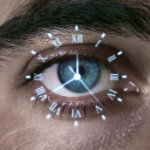Ultherapy to maintain or “upkeep” your blepharoplasty (eyelid surgery or eyelift) results!

Once you’ve had an upper/lower eye-lift or blepharoplasty procedure, you’ll likely experience renewal in your vision as well as an improved appearance.
- As we age, it is common to see a difference in the appearance of our eyes. Even with a healthy lifestyle and good skin care, wrinkles, puffiness and drooping of the eyelids are inevitable with time. Some people have these changes earlier than others due to genetics, smoking, sun damage, or other health concerns. Regardless of the cause, blepharoplasty can give a more youthful appearance to otherwise older, more tired looking eyes.
- Besides making you look older, severely sagging skin around your eyes can reduce your side vision (peripheral vision), especially the upper and outer parts of your field of vision. Blepharoplasty can reduce or eliminate these vision problems and make your eyes appear younger and more alert.
Following blepharoplasty, maintain your eyelid rejuvenation with a non-surgical treatment like Ultherapy, which can act to support your blepharoplasty procedure over time.
Supportive therapy for your Blepharoplasty procedure
Skin can continue to shift or become lax as can muscle as we age, and go about our day-to-day lives.
Like any type of routine maintenance, it is sensible to consider routine ‘touch ups’ to keep your investment in your blepharoplasty, eyelid surgery, or eye-lift renewal in top shape.
We offer Ultherapy treatment to rebuild collagen and tighten the skin around your upper and or lower lids. Ultherapy as a maintenance tool is a means of maintaining your initial blepharoplasty results, helping to keep your renewed vision and appearance results.
Although Ultherapy is available in spa settings, it is recommended that a physician, with powerful medical training, and first-hand knowledge of working with your facial structure perform this procedure.
At Ophthalmic Consultants of the Capital Region, our doctor, George O. Stasior, M.D., F.A.C.S. is board certified in Ophthalmology and specialty trained in ophthalmic plastic (oculoplastic surgery of the eyes) and reconstructive surgery. When Dr. Stasior delivers an Ultherapy treatment, as a result of his extensive training in Plastic and Reconstructive surgery, he considers the anatomy of the patient’s eyes and face in relation to their bone structure and underlying soft tissue elements and employs this knowledge in the delivery of the patient’s individualized Ultherapy treatment plan. Given this special knowledge and training, Oculoplastic reconstructive doctors are a better choice for Ultherapy when compared with a technician, nurse, nurse practitioner or physician’s assistant trained to use the Ultherapy machine in a general spa setting.
How often do I need to consider maintaining my procedure?
The improvement you experience after treatment lasts, on average, twelve months.
Ultherapy treatments are a means of investing in extending the benefits you realized from blepharoplasty (upper or lower eyelid) surgery. Ultherapy is recommended for the occasional upkeep to optimize and fine-tune the improvements you experience.
Based on a medical assessment of your unique skin and facial musculature, our doctor will create and perform a custom treatment plan to keep you in a state of renewed improvement. We will determine if such a schedule might be every six months, yearly, or another schedule that is uniquely suited to and best for you.
One of the greatest benefits of using Ultherapy as a maintenance treatment is the lack of down time needed post-treatment. Since this is not surgery, you can get back to your normal activities immediately.
Revisiting Blepharoplasty for context
Blepharoplasty is an upper and or lower eyelid surgery, which is performed to help improve the appearance of the eyelids, as well as to reduce any impairment of vision caused by drooping eyelids. Blepharoplasty can be performed on the upper lids, bottom lids, or both lids, depending on the needs of the patient.
Types of Blepharoplasties
- Upper Eyelid
- An upper lid blepharoplasty removes tissue from the upper lid to improve the appearance of the upper lid crease, address redundant skin folds and remove unwanted fatty deposits. It can be performed at the same time as a ptosis repair to address drooping of the upper eyelid muscle.
- Lower Eyelid
- The goal of a lower lid blepharoplasty is to improve the contour of the lower eyelid to give a more youthful appearance to your lower eyelid.
When Blepharoplasty is typically considered
This procedure is done for functional and cosmetic reasons. It is an effective way to improve sight in people whose sagging upper eyelids get in the way of their vision.
- You might consider functional blepharoplasty if droopy or sagging eyelids keep your eyes from opening completely or pull down your lower eyelids. Removing excess tissue from your upper eyelids can improve your vision. Upper and lower lid blepharoplasty can make your eyes appear younger and more alert.
- Eyelid surgery is often performed to improve the appearance of bags under the eyes, as well to fix drooping upper and lower eyelids that may be impairing vision.
If you wish to explore having blepharoplasty surgery or wish to discuss the use of Ultherapy to support and enhance the results of Blepharoplasty surgery, please call 518-807-7027, or email us at PatientAdvisor@ophthalmicconsultants.com

